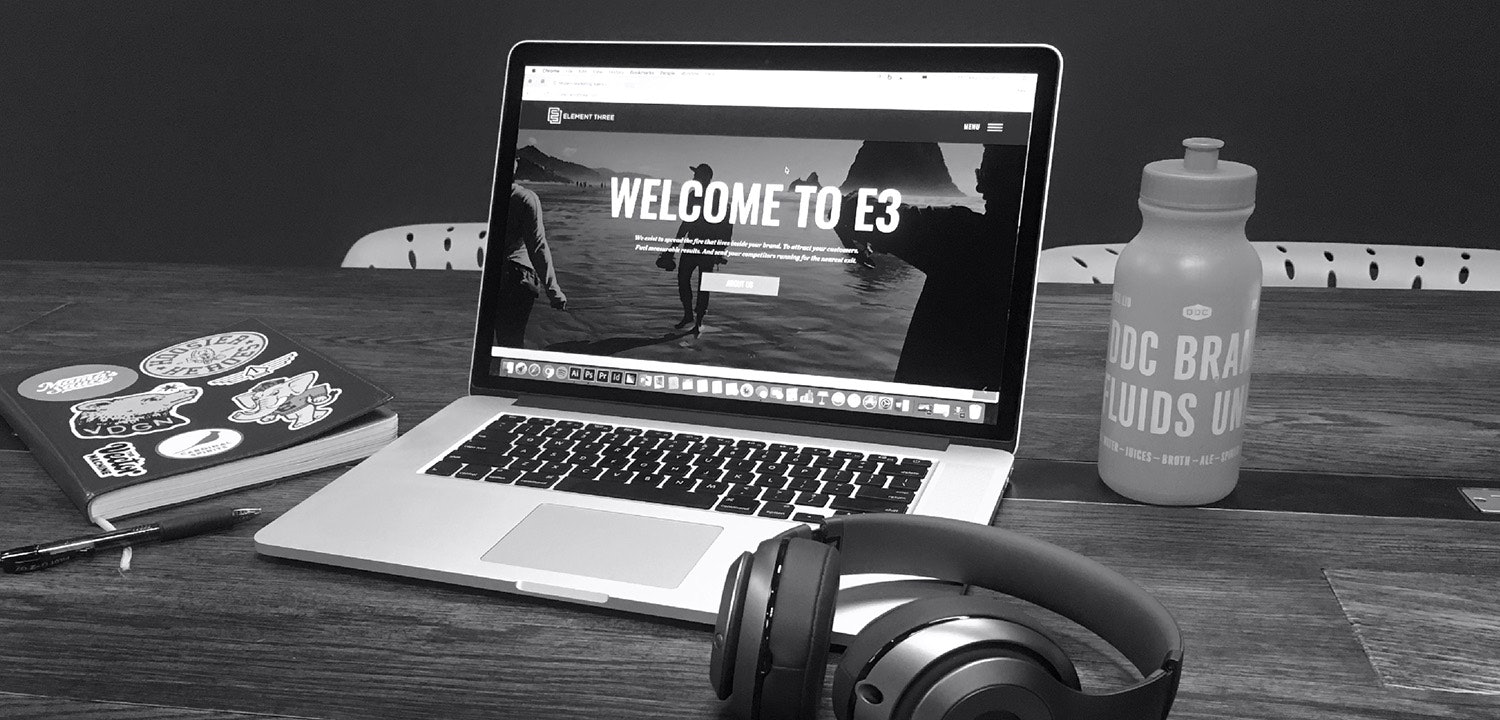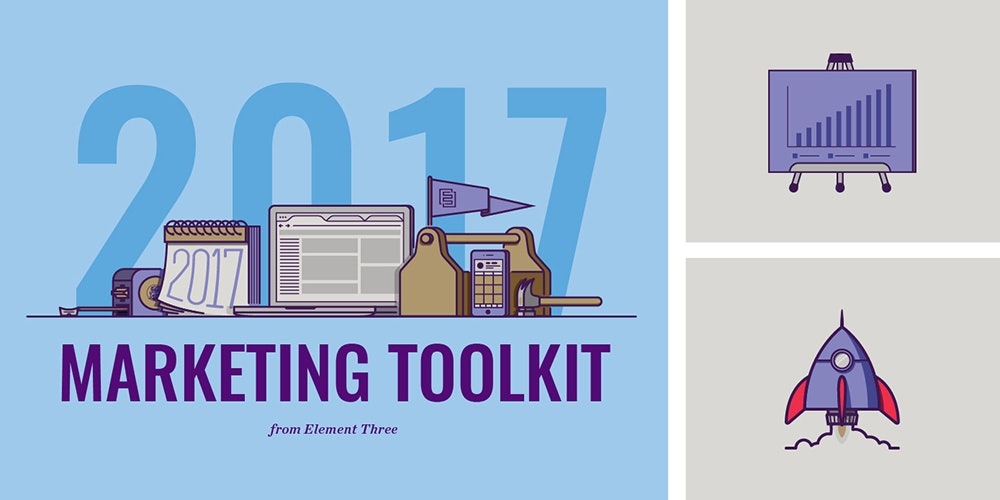At Element Three, we use whatever means necessary to present your customers with a seamless brand experience.
The most important of these means? You guessed it: your website, which must function as an authentic representation of what is perhaps your last remaining currency.
Outside of presenting an intuitive, responsive, and highly intentional user experience, your site should connect with visitors on an emotional level. One that allows who you are and what you’re all about to resonate with your audience.
As we have worked to evolve our own website, we focused on making the Element Three brand a key part of each touchpoint our guests would encounter.
Below, we share what we did and why in an effort to highlight the many different ways – big and small – you can better represent your brand on your own site.
1) Collect yourself
Your website should reflect what your employees create day-in-and-day-out, so start keeping track. Over the past year, we made an effort to collect all of the different things our talented artists were creating to represent the E3 brand. And being that we’re a creative marketing agency, there were a lot of solid pieces and parts for us to work with – fonts, stickers, t-shirts, even multiple versions of our elephant logo.
2) Show the work
The bigger you get, the more your list of services expands. Your brand should not only reflect your latest capabilities, but immerse your audience in the progress that’s being achieved as a result. As we’ve grown to beyond 50 employees and more than 30 distinct service offerings, we wanted our website to deliver a “behind-the-scenes” look at the work we’re doing as we continue to evolve.
3) Write with purpose
Anything that sheds light on what you do should also lend a voice to how you do it. After all, most brands offer many of the same services as their competitors. It’s how you communicate your unique approach that will enable you to be heard, or more accurately, understood by your customers. So make each word count. Aim for clarity. And respect both your audience’s desire and tolerance for information.
4) Display your true colors
Showcasing your culture plays a big role in communicating your brand essence. And the larger you grow, the more important it is to introduce your audience to talent you possess in a way that goes beyond the work itself. If you’re like us, your customers have choices. One way to ensure they choose you is to allow them to get to know what your people care about, how they get involved, and how they have fun.
5) Commit to the content
Quality, customer-focused content designed with a clear goal in mind has the power to not only capture new leads, but start meaningful conversations. So treat your blog, social media channels, case studies, and other consumer-facing resources as important outlets for your brand. Because the more insight you can give into how you think and solve problems, the more likely you are to forge a real connection with your audience.
6) Care about your Careers page
While many treat them as a receptacle for soon-to-be-forgotten resumes, your Careers page plays a big role in introducing your brand to an entirely different, equally important audience – talent. An opportunity to deliver the most sought-after applicants with a clear picture of life inside your organization, Careers pages attract more than just jobseekers, as potential customers often review them in an attempt to gain a better understanding of your company.
7) Don’t wait around
Most web initiatives seem daunting. Updating your site to better serve and support your brand strategy is different. As you may have gathered, not every change has to take place simultaneously. And while most of what’s suggested above requires enough time to gather the necessary assets, all of it can begin just as soon as you make the decision to start leveraging what you create to support who you are. In other words, use the work to do the work.











